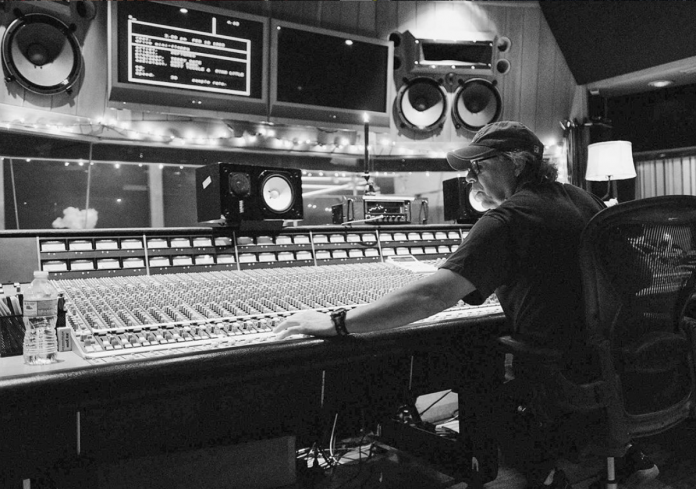Sure, Quiet Riot may have sang “Bang Your Head”, but Terry Date has made a hundred records that literally MAKE you do it. While some producers have careers, Terry Date has carved out a legacy. As the sonic architect of pivotal albums like Pantera’s “Vulgar Display Of Power”, Deftones’ “White Pony” and Soundgarden’s “Louder Than Love”, his influence is still heard on just about every heavy artist and album out there today.
With Terry back at the controls with Deftones for the first time in over a decade to produce the forthcoming “Ohms” LP, we wanted to ask about the mojo behind so many of these huge metal landmarks. Terry took a couple hours to share his insights on not only “Ohms”, but an enlightening smorgasbord of gear, philosophy, war stories and last wishes. And seriously? He’s as nice a guy as you will ever meet in this crazy business. Enjoy.
(after the customary two minutes of futzing with Zoom cameras and microphones)
Where are you broadcasting from right now?
This is mine, my home studio.
Interesting. I don’t think I’ve ever seen a picture of you with anything other than an SSL…
Well, when I did this studio, you know, I don’t work in here enough to leave a console on all the time and they (SSL) suck so much energy. So I wanted something that I could turn off at the end of the night.
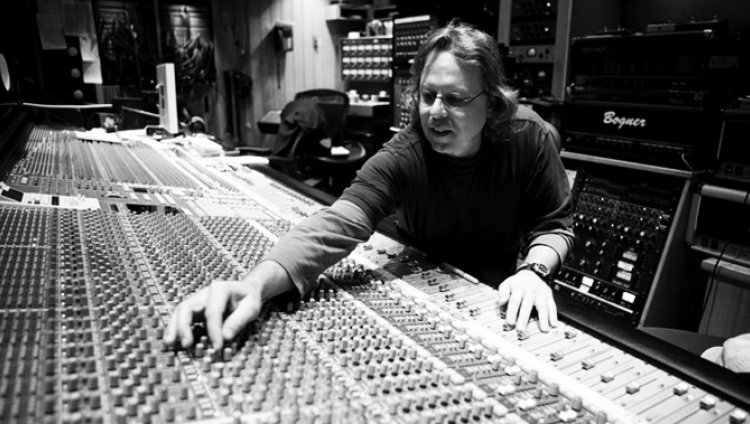
Right. You can never turn them off. They might not turn back on.
I know! And I’m in a neighborhood, so the power company always sends me this thing that says ‘this is how much power you’re using in relationship to your neighbors’. And as it is, I’m always the worst. Not by much. But if I had the SSL, they’d probably be calling the cops on me looking for a weed growing operation.
The weed farmer down the street still probably appreciates the cover. How long have you had your own studio?
Well, I’ve only had this board in here (he’s in front of a spanking new Rupert Neve Designs 5088) since a year ago, June. But the room itself, I’ve been kind of building this for seven years. And there’s a studio in Seattle that I use all the time called Studio X…
…that’s where you started, right? When it was Lawson Recording?
Well, technically Lawson was a different building a few blocks away. Studio X was on Fourth. And that was where I started.
Don’t worry, I’m not the creepy interview guy who knows too much. You don’t have to bother with the restraining order. Besides, I’m in New York City.
I was wondering what that area code was. But anyways, the designer who built Studio X was a designer who… whenever I’m in a new city and I need a studio, I always look for the bau:ton-designed rooms. And so Studio X was built by them also. And I just took pictures of every bau:ton room I was ever in. And I was so used to it that when I built this place, I just kind of did it from memory – it’s really designed from that. I did all the work myself, just because I’m kind of dumb like that. But all of the acoustic stuff, all the wood, everything on the interior I did myself as well as the wiring of the board.
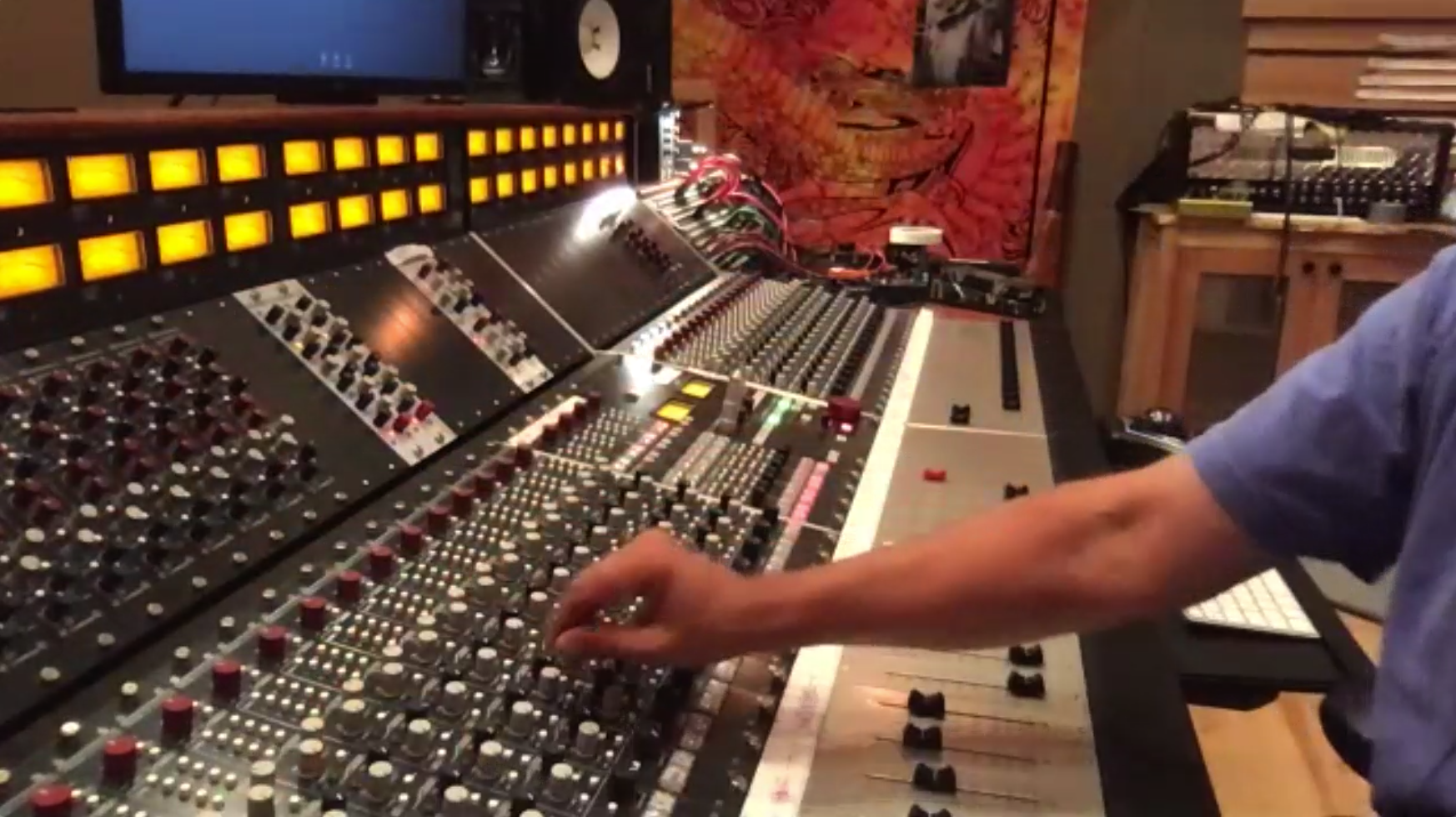
You sound like a man who’s desperately trying to avoid spending time with his family.
You are a wise person. How did you know? I have two daughters – and because I have two daughters I am massively outnumbered when there’s a discussion going on. I would much prefer solder smoke.
There’s something very “zen” about leaning over a PCB doing solder joints. Also, if I DIY my own stuff, it’s easier to sneak new gear past my wife.
Yeah, I don’t know how I snuck the board in.
So tell me about mixing on the Neve versus the SSL.
SSL has its own sound, but you have to work for it. These boards, the less you do, the better sometimes and that’s very weird for me. I’m so used to digging hard on EQ. And so it took a little while to get used to all that. I’ve cut a lot of records on Neve and mixed on SSL. Or API – I love tracking API. This is the first time I’ve ever mixed on Neve and it’s a little bit of a transition for me. But it’ll work really well. You know, I don’t need automation – I have the computer for automation. I don’t need recall – I just take pictures. And I do a lot of stems when I’m mixing, so if I have to go back on a mix, I’ll do it from stems. And that way I don’t have to go so deep unless something is really wrong.
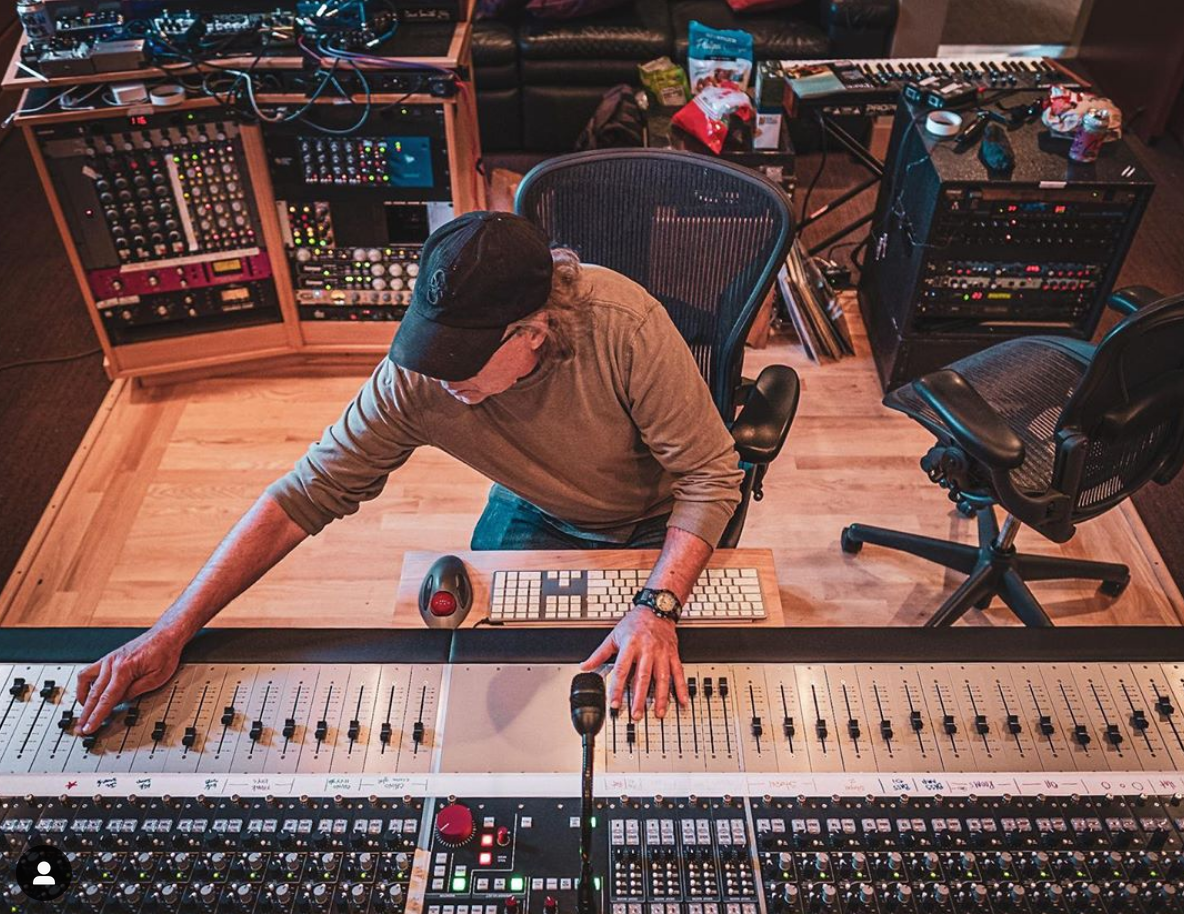
So you actually mixed the new Deftones record on the 5088?
Yeah, we did the music at Henson Studio B and the rest right here. We were right at the very beginning of the pandemic. I started mixing it sometime in February. I believe the band was just about to start their Australian tour right when I was starting to mix. And the day before they left they had to cancel because the pandemic was swirling around out there and management didn’t want them risking it. That was a good move obviously because everything got shut down three days later. So fortunately, we’d been in here for… I don’t know… four or five months on and off? And we just decided to keep rolling with it right here.
And there’s advantages and disadvantages to that. You know, the advantage for me was that I can just work two hours a day if I want and walk away then come back the next day, check it out, listen to it some more… I can’t take my time if I’m at a Henson or a place like that, I’m paying a daily rate. I have, in my opinion, the best people and the best gear anywhere in the world there (Henson). I love working there just because of that. But I feel like I’m under the gun, I’ve got to get it done, done. And also, you know, just in this situation, if I’d have started it down there, I would have been shut down because of COVID. They shut everything down pretty early in California.
Every one of us picked up a quarantine project. And, you know, yours just happened to be kind of lucrative.
Well the thing is, Deftones, they’re like family to me. We’ve been together for so long and they live relatively nearby. I mean, Chino (Moreno, vocals) can drive here if he wants to. That’s who I was working with primarily after we left Henson. So it was really comfortable. You know, it was just like we were making a record in our garage, which is kind of what we were doing.
The last time you had worked with them was the shelved “Eros” project in 2007 or 2008.
Right.
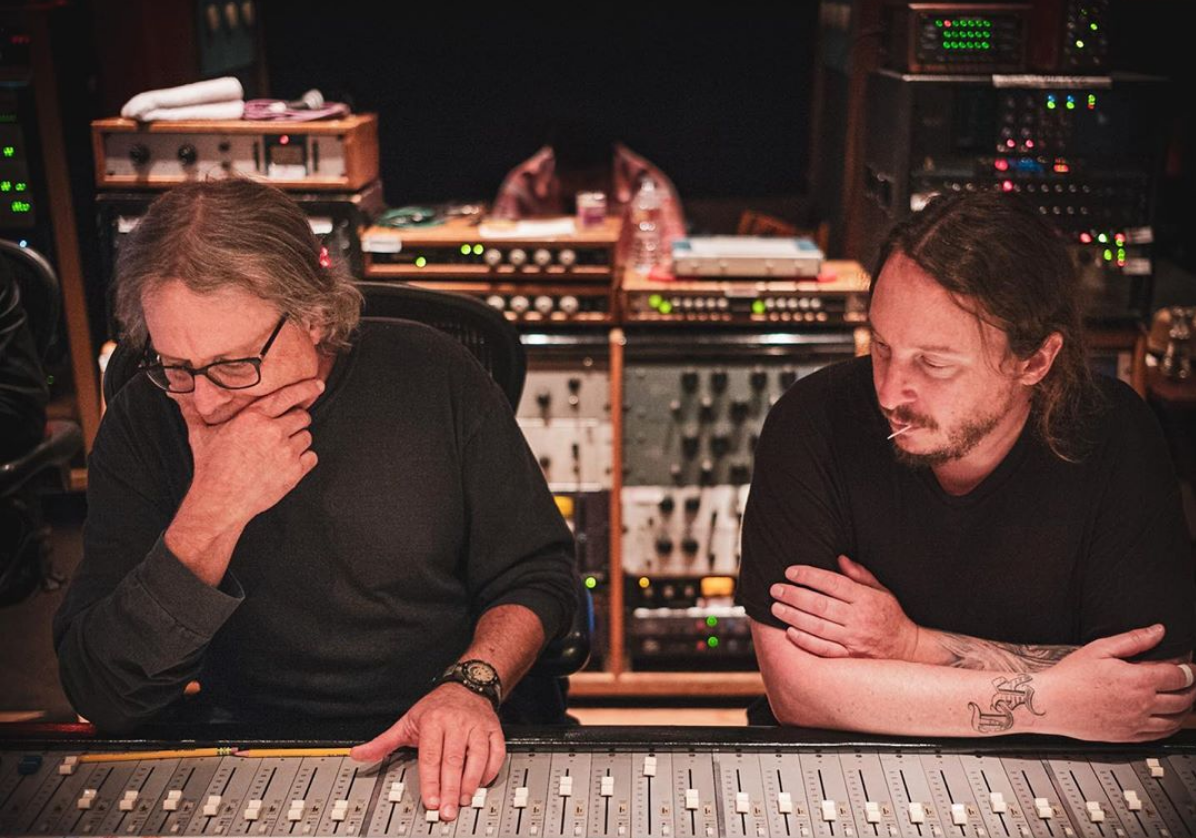
What was it like recording with them in 2019-20 compared to then?
Well… I think the main difference is that they’d been around the block enough. They’d worked with other people. We came back, everything was kind of comfortable. They knew what they were going to get. There wasn’t the head-butting like in the early records. There’s always tension, of course. But “White Pony” was really tense because there was other stuff going on, auxiliary stuff with that record. Everybody was pretty sane, pretty sober. It’s been a while since they’d made a record, so they weren’t burnt out there. You know, it was a fun process. And we all stayed together at a hotel in LA. So we were doing the music part of it at Henson. We’d always get up in the morning, go have breakfast. You know, it was just fun. And then when we came up and worked up here they would come up. We had everybody up here for part of the time just for moral support. But mainly it was just Chino and me or Sergio (Vega, bass) would come out from New York. Frank (Delgado, keyboards) would come up, you know, but it was pretty laid back.
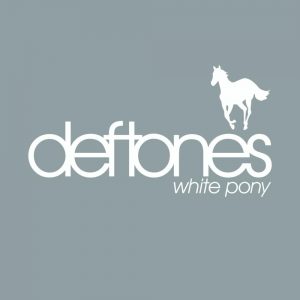
“White Pony” is almost finally old enough to buy beer. There’s been a lot of media attention around it turning twenty this year. Do you have any thoughts on what made that album so significant?
I just think a lot of it was just… they were at a peak for them and there was… you know, that was their third record. Third records, especially during those days, were always my favorite. Second and third, but mainly the third. The first one was… all the bands have been playing the songs live a bunch, but they didn’t really know the studio that well. The second record, with relative success on the first record, they were a little bit better. Then the third record… they had the experience, they had the money, but they also had the tensions of family, extra-curricular business stuff was kicking in more, you know. There was all kinds of pressures being put on them, so everyone was more stressed out. And I think that stress, as long as it was focused toward making the record…
…it’s like harnessing nuclear power.
Yeah. I think that that was really the secret sauce there.
Do you think “Ohms” will be your new favorite Deftones record?
Well, you know this from doing this for so long, after hearing a record so many times in a row, it takes me ten years to actually like a record again. I have to get so far away from it to appreciate it. I’m just now starting to like Pantera records! And that’s overdramatizing, of course. But the immediacy of the dirty laundry is so apparent when something is new like that. So I can’t judge anything right now. White Pony is still my favorite just because of “Digital Bath” and because I reference myself to those drums at the beginning of that song, that drum sound. I think that was my favorite drum sound that I got with the exception of the two hits at the beginning of “Around The Fur” album. Yeah. My favorite entrance to any record I’ve ever done was that right there – just like, “Here we go.”
You know, Abe (Cunningham) is a heavily underappreciated drummer, massively underappreciated.
Abe is, in my opinion, one of the most underrated drummers. I mean, that guy’s feel… and I know this from sitting through rehearsals with him… just his personality, everything he’s like… my favorite drummer. He’s just what a drummer is supposed to be, I think.
It seems like with every new Deftones record, Stephen’s (Carpenter) back with a new guitar. This one’s got seventeen strings, all strung with telephone pole cable and it goes to 40hz. No problem though, right?
(Laughs) Well, you know, somebody sent me a thing the other day and it said, “Next record, Stephen’s going to be playing a harp.”
But this means he’s ostensibly playing the bass. So how does Sergio work within that? How do you rectify a guitar that’s quite literally where the bass is supposed to be?
Yeah, my assistant engineer on this, Andy Park, we were talking about this. The hardest thing to do on this record was managing the low end. Where do you go? And Sergio plays, you know, because of Stephen’s extreme low end, he’ll creep toward the mid-range a lot more – which creates some problems with “who’s going to take the spotlight here? Who’s going to stick out? Where does everybody fit in? This was the first time I’ve worked with Sergio – I’ve known him a long time but it’s the first time I’ve made a record with him. So it was different than with Chi (Cheng, R.I.P.) because he’d play with his fingers. He’d sit down below everybody basically. He would just “do what he does”. With Sergio… Sergio’s a much more active bass player.
He definitely walks a lot more…
…right and he likes to have a lot of interesting sounds. So it was one of those things that was, you know, we definitely had to think through it a little bit.
The one thing with Deftones is it takes me a long time to like the new record. I still don’t get into “Gore”. I might soon.
That’s the previous one?
Right.
I’ve heard them probably in interviews say that wasn’t their favorite to make either. I think there were some issues going on there. I don’t know. You know, I didn’t listen to a lot of the other records that they did just… ten records, there’s a lot of material to listen to and they do a pretty good job of not repeating themselves. And that’s what’s really impressive. Chino’s always been really sensitive that he never wants to do the same thing twice. And it’s so hard. The longer you do it, the more records you make, it’s so hard to not fall into patterns and tendencies.
Well, I can’t believe that in twenty days or whatever I’m going to have a vinyl copy of the new one here. The first single fits like a comfy old pair of shoes…
There’s a lot of good songs on there. You know, this to me (“Ohms“) wasn’t… this wasn’t a first single to me at all. I mean, it’s a good song.

The first chords were major intervals! That kinda threw me.
I think it was the first song that Stephen brought in. I don’t know who decided that. I don’t even know if it’s a single, I just know it’s the first video, the first song they wanted to release. But there’s some really good songs on it. I’d love to hear your thinking after you get to have a few good, honest listens with the record.
So they did their previous three albums with Nick Raskulinecz and Matt Hyde. Did you take any of your production cues from those records or was it more of a tendency to continue building off of the work from “Deftones (s/t)”?
Well, first of all, Nick is a good friend of mine. And I love what Nick does. You know, I love everything he does. I didn’t want to go back and listen to stuff they did with other people because the reason we were working together again was to hopefully capture some of the early records’ vibe… the “magic”. And even if we weren’t doing that… if I was working with a band for the first time, I’d try not to listen to old stuff too much because I don’t want to be influenced by where they’ve come from. I would much rather just forge our own path and just see where the record takes us. I don’t want to try to guide it or direct it artificially, I guess. I just wanted to sort of follow its own path and see where it goes.
So I don’t know, if I’m mixing a record for somebody, I’ll listen to their previous records just to kind of get a vibe of where they are. If I’ve never worked with them before, I’ll listen a little bit there. But I don’t like to… I guess I’m insecure?
(Laughs) You’re such an artist…
Right, everything sounds good to me. I do my stuff and I go, “That’s not as good. Oh my god, I’m going to jump off a cliff.” So now I… I tend to just, you know, go my own way.
Your body of work still is a major influence on metal today. Not just how it’s mixed, but how it’s played. Did you ever think at the time you were creating the template for heavy music twenty or thirty years down the road?
Well, the short answer is “no”. We, you know, especially in the early Pantera days, we were listening to stuff trying to fit in to what was around us. I remember I can’t remember if it was Vulgar (“Vulgar Display Of Power”, 1992) or Cowboys (“Cowboys From Hell”, 1990), but around that time is when (Metallica’s) “…And Justice For All” came out with that kick drum that was all click, you know? And I think Anthrax was probably doing it before that.
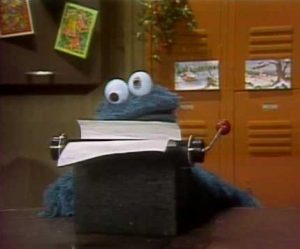
You’d also have to either credit (or blame) death metal in the late 1980’s for that. Scott Burns created something that could cut around the “Cookie Monster” vocal and drop-A guitars. A lot of engineers just call that ‘the typewriter kick’ now.
Yeah, I don’t know. Sometimes I don’t remember exactly what the bottom line is. We just sort of, we were trying to find sounds that were what we thought were common and popular at the time.
So you’re in this league of extraordinary gentlemen where when you hear a record, you can tell who did it. I can spot a Chris Lord-Alge mix, or a Colin Richardson mix or an Andy Wallace mix. But I don’t say, “That’s a Terry Date mix” that way. How do you go from doing White Zombie to Smashing Pumpkins to Slayer without having a trademark sound? I mean, I know it’ll be up front, all the elements are on the tip of my nose, the vocalist’s literally inside my head. So what’s the secret to keeping them all unique?
Well, this is not an original thought by any means but, you know, my initial thought early on was always to keep myself as invisible as possible, because well… first of all, I’m not a musician. So I’m not going to get in there, I’m not going to give musical advice like, “Play it here instead of here.” I’m going to be listening like a fan. And the other thing I try to do is… I want to see this band, I want this record to sound like the band sounds like on stage. I want it to sound like them live. So by doing that, obviously, I can’t make Smashing Pumpkins sound like, you know, White Zombie, there’s no way.
Smashing Pumpkins probably isn’t the best example. I didn’t really work a ton on the development. I made it about two thirds of the way through.
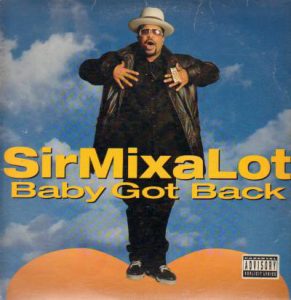
That was a bit more lunatic fringe. I mean, I could have said “Sir Mix-a-Lot”, but…
Well, you know, Pantera and White Zombie are radically different. I mean when we did the White Zombie record, it was the first record I ever used a sample on. People always used to ask me if I sampled Vinnie (Paul)’s drums with Pantera and those weren’t samples. Those are just extremely EQ’d real drums.
Just really compressed to get that same consistent hit?
You know, to tell you the truth, I don’t think we compressed the drums much. I’m pretty sure… well I’ve got the documentation around here someplace I was looking at the other day… but they hated compression. The guitars were definitely not compressed. I had to sneak the bus compressor on the SSL when I was mixing because they hated the bus compressor.
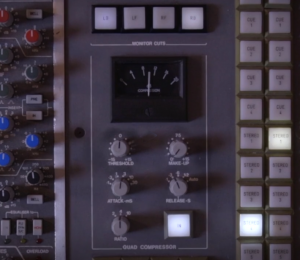
Who could hate that compressor?!?
I know, well, they just thought the compression, especially Dimebag (Darrell, R.I.P), you know, the low end on his guitar would get tamed a little bit. So, you know, no samples and I… I’m not 100 percent sure, but I’m 99.9 percent sure drums had no compression either.
So some of the other LP’s and artists… you’ve got the A-listers here but then also some that are a bit more off the radar… the one you did for Dredg or Handsome, for example. Do you have any standouts from your years of doing this that should have been bigger?
The second Prong record that I did, “Rude Awakening” (1996), is one of my personal favorites to listen to. I used to always, when I’d walk into a studio to start a record, I would put on that record to start with. It was done right after the White Zombie record, but it had Tommy’s (Victor) just brutally edgy guitar. His guitar sound was so good, but we also had Charlie Clouser doing loops. So it was a really cool combination, I thought.
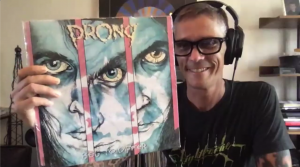
This one (pulling out my vinyl copy of Prong’s “Beg To Differ”) to me is always their one to beat.
Ahh, yeah. That was Mark Dodson.
Mark Dodson and a whole lot of gated reverb.
I did a Metal Church record with Mark Dodson. So I’ve worked with him before. As a matter of fact (motions to a rack) see those (Neve) 1081’s right there?
I most certainly do.
Those are his. It was around the time I was doing that Prong record. Actually, I was in L.A. and I was looking to buy some and somebody got a hold of me and said, “Hey, there’s a couple of 1081’s for sale in town for $1000 a piece.” And I said, “Well, I better listen to him!” At that time they were probably going for two grand or fifteen hundred maybe, they were still pretty cheap.
So the 1081 is your go-to?
Well, the 1081 was what was available to me. It has a little bit more, it’s got more frequencies on the high end than the 1073. (laughs) I think they probably sound just exactly the same, you know, very close to each other. I’m not the audio snob where I put two identical modules next to each other and I’ll just turn my nose up at one of them when the other one is beautiful, you know? A 1073 or a 1081? I would be totally happy to record anything through either one of those.
So when do you think was the last time you actually cracked open a reel of 2” tape?
Wow, it’s been… it’s been a minute… It’s probably been ten years. You know, it might have been… the last time I used tape for real was probably that Smashing Pumpkins record. There was a minute when the transition was coming, when you’d go into a studio and you’d pay extra for ProTools. Tape came with the studio, but you had to rent ProTools – and during that transition was where Pro Tools became free and you had to rent the tape deck.
Oh, it was lucrative for me in the late 90’s. I was a for-hire ProTools guy. I had three (Apogee) AD-8000’s and a ProTools Mix Cube in a case. One call and I’d be anywhere. I never even had a business card, I just got one call one day and then got really busy, really fast. I was “that guy”. If you ever want the exact measure of fifteen seconds, it’s the time from the artist leaving the studio and the engineer turning to me, saying “that crap’s never going to stick around.”
Yeah, I know. I have definitely heard that. “Yeah, it’s all gimmicky”, and yeah, we saw where it landed. But you’re right. That was the transition. I remember when we were doing that Smashing Pumpkins record – just finding a studio that had a Neve and a tape deck and an engineer who knew how to align the machine. Nobody knew how to run it any more. So I had to, like, kind of dust the cobwebs off my brain and try to remember how to set up the machine and show him how to do it…
…where’s that alignment tones tape?
(laughs) …and then to sync two or three machines together, you know, with timecode? That was was like Bizzaroland for everybody.
Around that time when ProTools first came out, I did a similar thing when I’d walk into a studio and they were charging me huge amounts of money to rent a ProTools rig, I just went out and I bought one. It was actually when we were doing “Around The Fur”. I had my assistant, a guy named Ulrich Wild who has gone on to do pretty good stuff himself. I said, “Okay, Ulrich, your job for the next two weeks is to figure out how to fucking run this thing because I’m not going to. I’m too old for that shit.” So he learned how to run it and then I took the thing and I would rent it back to my projects for like half of what… I mean, they wanted ProTools. We’d go into a studio and instead of renting the studio’s, we’d rent mine for half of the cost. And I’d make money. The band would make money and it worked out pretty good. Then, of course, the transition became complete. And I’m not going to roll around with a two-inch tape deck anymore.
And the huge studios wonder why they’re dropping one-per-day. There’s been so many great studios here in New York, but you turn around one day and they’re gone. There’s one over Jersey (IIWII Sound) that acquired one of the ten Focusrite consoles that Rupert Neve designed.
I did a record working with Tony Visconti years ago. We worked at Electric Lady “A” right when they put that Focusrite console in.
It’s a beautiful piece of engineering… when it’s running.
Yeah. Just don’t touch it because you’ll burn the shit out of yourself.
At Chicago Trax they had the unofficial follow-up to that, the AMEK 9098. It was their Mix Magazine “cover shot” room. I don’t think it lasted eighteen months. Their tech basically moved in. But I still do see that analog fetishization – bands who say, “I just want tape.” I mean, that’s cool and all but I think we’ve forgotten the problems. Do you need a drum edit? Let me go find a razor blade!
The advantage of tape to me was always, well only a small part of it was the ‘sound’. The biggest part was the fact that the band had to perform. You know, there was no fixing things. So it was more like a real performance. There was the fear of failure.
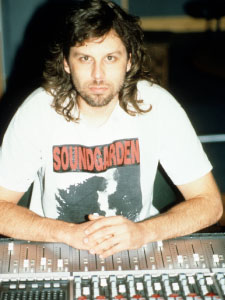
That’s a bit cruel!
Well, I mean, it’s just like, “I’ve got to do this.” You know, be on point. It’s got to be like going on stage.
Don’t fuck up!
And now with ProTools, you know, there are guys who don’t know anything but ProTools. They know they can play 50 percent or less and if they get one little piece of it right, it can be copied and pasted. So there’s none of that, like there isn’t that fear going into making a record anymore or “butterflies” or whatever you want to call it.
But can’t that be a good thing? You know, musicians are a tender folk and the fear of failure is just the sort of thing that can keep them out of their element. But to be able to go in saying, “Listen, just do your best, we’ll be proud of you and we’ll fix your screw-ups.” But I can’t remember the last time that I quantized live drums. If it was off, well, I’ve got eight other performances I can tab through. Let’s pick a verse, let’s pick a chorus, now let’s see how the verse feels going into the chorus. You know, the “Russian Dragon”, that’s rock and roll, isn’t it?
You got to push it, right. But the comment you just said, “You just do what you do and we’ll fix your fuck-ups”? The mistakes were my favorite part of those early records! I did an Overkill record and I remember one time where I fucked up punching in the bass player and instead of it going “Wyoo!” (a bass guitar slide), it went “Wyoo, wyoo!”. And it was like the coolest part of the whole song, you know? It was! So anyway, those happy mistakes, you can get them with ProTools, too. You just have to be disciplined enough. You just have to be disciplined enough to know what’s good.
I’m having a harder time listening to bands these days and knowing they’ve “Beat Detectived” the life out of a perfectly good performance. Like Chino (vocalist, Deftones), his vocals are often at their best when they’re just the slightest bit out of tune. I don’t know if they’d be as compelling if they were dead accurate.
I don’t use AutoTune. I mean, I have in the past, but partially I just don’t like using it. If I was doing a fucking Ford commercial, I would probably use it, you know? But for what I’m doing, I want the warts. You know, I like all the scars.
Yeah. I mean, this is rock and roll. At the end of the day, we’re not making, you know, EDM or K-Pop where the perfection is really ‘the sound’. I don’t see you making that late career pivot, either.
I wouldn’t know where to start.
So in your opinion, what’s a trend in production or engineering that really needs to end?
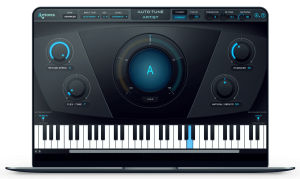
I mean, the AutoTune thing has always been my, you know… fixing mistakes. Over-correcting the song is… the problem with me is making things sound too good. You know – of fixing, making something sound good because you can. I think that’s the thing that I kind of run away from the most. I want to always want to make it sound like I’m attempting to make it sound good, but I never quite get there. That’s the goal for me.
So if you had to record stranded on a deserted island…
I mean, if I was stuck, if I had to make a record with one microphone, it would be a 58. And it would be run through two 1176’s. And it would probably go straight to two-track tape. Okay, and just because I’m on an island. I don’t have that. I got to keep my gear limited in a small boat that wrecked and I got deserted on.
But do you have anything like, if you were on a three month studio lockout, how many racks of gear with your name stenciled on the side are in the loading dock?
Well, I record drums through Neves. You know, I want to have Neve. I want to have API’s. (motions to four “O.G.” 312 preamps) I always want those available to me. And those there, those are the original ones from Studio X which sound way better than the reissues. I still use the reissues a lot because sometimes I just want more. So anyway, some Neve modules, some API modules, an 1176 – I use those a lot for vocals. But that’s kind of my “comfort zone” compressor.
That and the SSL bus comp. Do you have a racked version of that?
No, I thought about getting a 500 series version of that not too long ago. But I have the Alan Smart C2 to do the same thing, just because I’m so used to seeing that. That quad bus, you know, I don’t even probably know what the knobs do anymore. I just know how I set them always, you know, and so it’d be nice to have that. But to tell you the truth, I don’t know if the five hundred series sounds the same anyway.
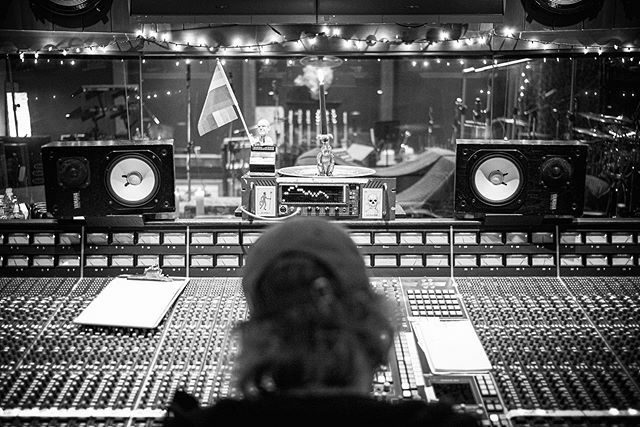
You’ve influenced my generation of engineers and producers. Now we’re finding ourselves passing OUR torch a bit. What’s an insight you want to pass on – something they’ve missed?
One thing I find with younger guys coming up is they basically only know the computer. They don’t listen, you know, they’re so concentrated on just being fast that they’re not sitting back and just listening to what the problem is. I sound like a really old man: “You need to listen more!” That’s the biggest thing, though, is they’re so fast on the computer. There’s so good with being in the box – and being in the world of the box that they forget about what’s around them. They forget that somebody is telling you something, you know? Take the time to listen to what they’re actually saying. You know, don’t just assume that you can fix it over here in the box easily.
I use controllers, but I’ve got everything mapped so I can set EQ’s and compressors with my screen off and just listen. It may not be mathematically right, but sonically…
…that was the biggest problem I had making the transition to using a plug-in from using something real. You know this is so psychological, I’m sure, but I bet there’s something to it. You know, I definitely hear the EQ change differently when I’m turning it with my hand, when I’m actually turning a knob, than when I’m moving the mouse and looking at a screen. It’s just that I hear things different that way. I’ll use plug-ins. They’re really handy to have and you can you know, you can get one and they can go across your whole mix and all that instead of having to buy, you know, a bunch of individual units. But nothing beats the real thing.
I’m not so old that I don’t remember working on an old 4000E. Still with the 8” floppy drive, thank you very much. So we had what, 32 channels of the black 242 EQ, the 611 dynamics – mixing with the same line amp, EQ and compressor on every channel. Now you see sessions that have a Pultec here, a Neve there, it tends to take away a sort of “gel”. It makes the tracks seem unrelated to me.
I am much more comfortable when I can EQ and process everything right on the board and everything kind of goes to the bus there. Using plug-ins, I have to be really careful to do them so that I’m comfortable with it. So “the glue” that you’re talking about is very valid. It’s hard to glue things together when you’re mixing things up like that.
Someone says, “I need a compressor plug-in” and boom, here’s ninety-seven different compressors. It’s cool until it isn’t.
You know, I’m more of a digital guy than I was ten years ago. But there’s a reason why I bought a Neve – because I want that… I want to hear audio through electricity. I started out making vinyl, making, you know, going on tape to vinyl. And so the transition… I mean, there weren’t even DATs back then. So the transition through the years of going from that beautiful analog to vinyl combination to now with all the different layers and finally ProTools or wherever else it’s going to go. You know, I was not leading the charge for new technology, let me put it that way. I liked tape. I liked vinyl. When you finished a record, it was never really done until you got the test pressing back and you could actually hear it. And then it sounded like a record.
Fred Durst “did it all for the nookie”. What did you do it for?
Well, I did it… early on, because my friends were all musicians and I didn’t want to feel like a dork hanging around watching them play, I had to find some way to contribute. I’m the one in the room… everyone’s playing something and I’m sitting there going, “Wow, that’s really cool. I wish I could do that.”
Usually that makes you a roadie.
That’s true, I kind of started that way, too.
You built your career in heavy music all the way to Slayer. It simply doesn’t get “more metal” than that. There have been heavier bands since, but there’s none more metal.
You know what’s funny is that until I started working on that record with those guys, I’d never met them in 30 years. You know, I’d been backstage when Pantera was playing with them. Phil would take me… there was a road case on the side of the stage that said
“Phil’s Throne”. So when Slayer was playing, he’d go sit there and he’d make me come out with him and sit there next to him. He goes (adopts a perfect Phil Anselmo impersonation), “You know? These guys are my Led Zeppelin.” But I never met the guys in all those years, you know, until we met and we did that record. And now whenever I see Kerry (King, guitar) whenever we’re close, we go find someplace to eat. We talk fairly regularly still.
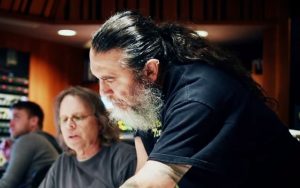
When I read that you were cutting an album with Slayer, my first thought was like many Slayer fans… there’s no Jeff, there’s no Dave…
I got a lot of people that were concerned about that, you know, not having the original band. But, you know, I didn’t really care about that. I wasn’t a huge Slayer fan. I mean, I wasn’t not a fan. I was just listening to a million other bands at that time. And I didn’t know the Slayer guys so I wasn’t, like, locked into, “Oh my god, this is not Slayer because (Dave) Lombardo wasn’t there or (Jeff) Hannemann (R.I.P.) isn’t there or whatever.” But, you know, it was just fun. Those those guys were just great guys to be with.
You know, Slayer fans can and do tend to border on the somewhat, you know… you got to be a little bit cautious.
I mean, between Tom and Kerry, I laughed really hard through that record. Tom can keep me on the floor all day long if he wants to. So we had a good time.
Do you think they’re going to squeeze one more record?
You know, I don’t know what they’re going to do. I do know that we do have, you know, we’ve got other songs recorded.
I know you’ve done a lot of vocals where it’s just like, “Here, Phil. Here’s a floor monitor and a (Shure) SM58. We don’t need to get the Sony 800 out for this – it’s just going to get distorted anyway.”
Yeah, well actually for that vocal (Phil), he just stood behind the board. You know, I just had the NS10’s. Buckcherry. I did that for a lot of people. Rob Zombie was a 58 and a floor monitor out in the studio, but it was it was like, live volume off those things. I mean, it was so loud when I went out to talk to him and the music was going, I had to get into his ear, you know, that’s how loud it was. But yeah, Buckcherry, the record I did with them, he used the big speakers in the control room. Phil, a lot of the time was standing right behind me with a fifty eight. Chino did a lot of his vocals… well, Chino would actually tend to go be a little bit more hidden. He didn’t want people to see him when he was singing so much, but he has done some in the control room.
So if I’m looking to recreate the infamous SM58-into-the-trash-can-full-of-barbeque-sauce trick, like at the end of “Fucking Hostile”? What kind of barbeque sauce should I use?
Well, let’s see. That barbecue sauce probably came from some shitty barbecue fast food place in Arlington, Texas. It’s my guess, but yeah, I think, I think you’d have to have for me, it would have to be the Spicy Carolina sauce. So you know, we’re in Texas, so spicy with some fried pickles in there.
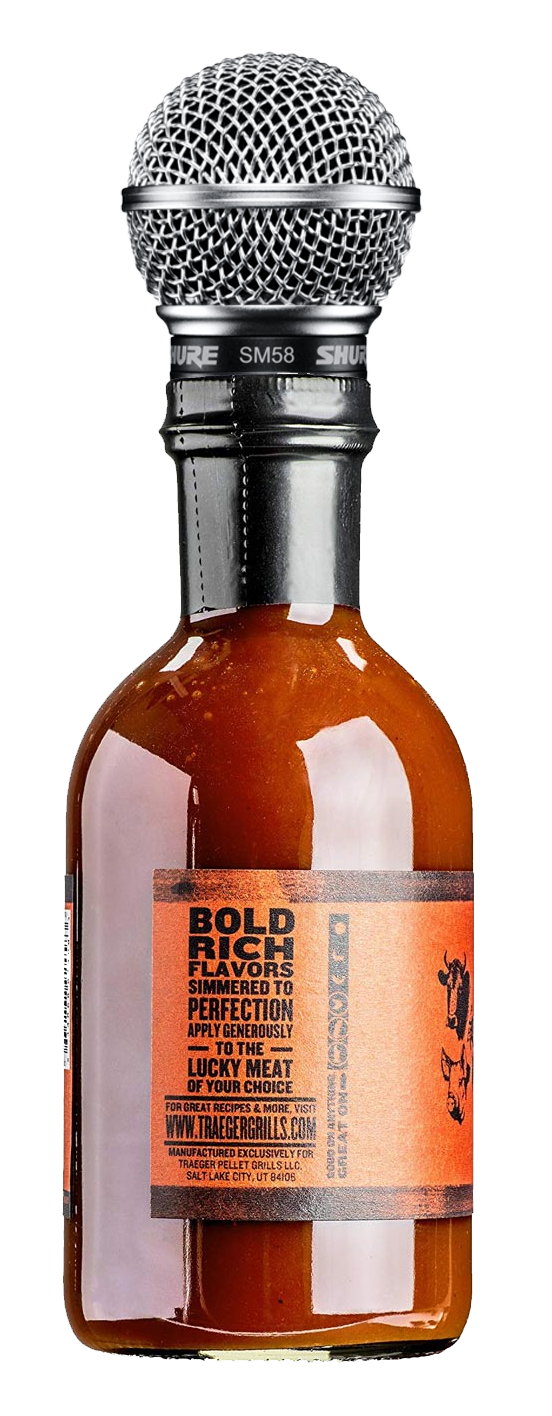
Do you see that maybe being a plug-in any time soon? The Hostile BBQ emulator?
You know, that story’s been around. But did I ever say anywhere what that distortion source was for that vocal?
The world awaits your answer.
I’m pretty sure I’ve said it before, but short-story-long here: Nine Inch Nails had come out with their, I think, you know, big first big record, I assume was their first record, the one about “fuck you like an animal”?
“The Downward Spiral”
Right, okay. So basically that distorted vocal sound was popular at the time and that intrigued Pantera guys a lot. So when we were doing Phil’s vocal, we wanted to get a distorted sound like that. And I was running through… Of course we had this little studio that didn’t really have a lot of interesting stuff.
This is still at Jerry Abbott’s studio?
Yeah, the studio where we did those first two Pantera records had like the regular 70’s and early 80’s stuff in there, but nothing for distortion like that. We tried whatever we could but couldn’t get it to go. So finally Dime goes, “Oh, I know how to do that. Give me a minute.” He runs back to his house. You know, he’s got this little closet set up with, you know, garbage sacks worth of foot pedals and all this shit. So he brings this, I think it was a Casio four-track cassette. And we plug the microphone into the preamp on that thing and just turned it up – and that was the distortion on that vocal.
Problem is, that was like an MCI tape deck and I think an MCI 500 console. The tape deck was so old I’d have to clean the heads after every time I stopped tape because the tape was just shedding. I mean, those old masters are probably clear right now. You can probably see through the tape.
You could sell vials of the oxide on eBay.
Yeah, I know. That’s what I was thinking about. But you know what? My favorite “ending statement” was Hunter Thompson, when he died. They put his ashes in fireworks and shot them, shot fireworks up into the sky and blew them up. That was great to me. So when I kick the bucket? Burn me up, mix me up with some oxide and make a fucking reel of tape out of me. You know, that’d be fucking awesome.
But are we going to record TO or play BACK from it?
Well, that’s the question.



